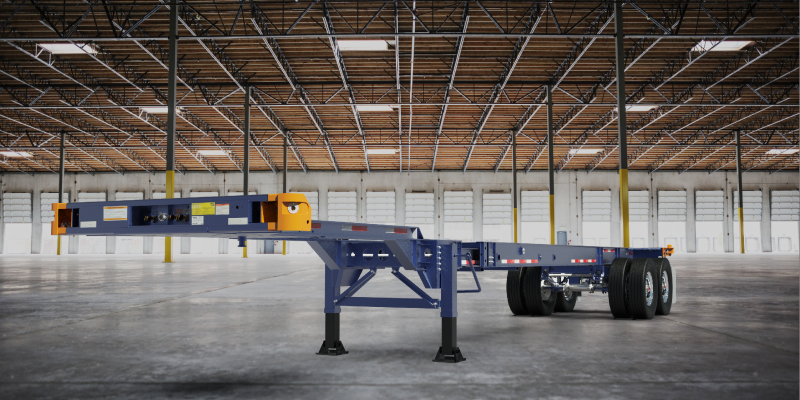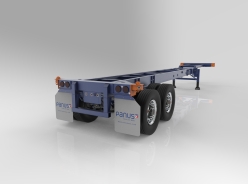Covid-19, global conflict, supply shortages, tariffs, petroleum prices, etc.; the shipping industry was, is, and likely will be impacted by the change and disruption in the pattern and volume of containerized traffic (not for the better), with no specific timeframe as to if and when commerce will return to “normal”. Whether it be increased fuel costs and freight rates, lack of vessel space, trucker shortages, equipment shortages, or port congestion, everyone is working diligently to better this truly unprecedented situation.
For reasons mainly due to Covid-19, there was a major economic pull back during 2020, which disrupted the production of new chassis and compounded the lack of equipment availability in the USA. In “normal” times, new equipment is built, bought, and put into service to both compensate for minor trade growth (perhaps 6%) and to cover replacement of aging / retired equipment (another 5% or 6%.) Some estimates suggest that the US market will require 80,000 chassis units to cover these additional and replacement needs.
Containerized shipping is unpredictably cyclical in the best of times; at best it can be described as a series of peaks and valleys. While the timing is anyone’s guess, what goes up must come down, and what goes down must come up. This is true for cargo, and in our primary interests, for the equipment to handle and ship the cargo.
With ships anchored outside ports, waiting for terminal berths, the supply of chassis equipment needed to keep pace is overwhelmed. A large and growing number of imports has swamped the US facilities, causing the turnover of equipment to keep goods moving to slow or sometimes come to a halt. As a large market share of the US chassis fleet is manufactured in China; a solution seems obvious… Why not simply manufacture more Chinese chassis? The US Department of Commerce has better ideas than allowing China to benefit from this deficit. Since the trade war with China started in 2019, the US government has taken several measures to limit the “unfair trade practices.” In addition to the Section 301 duties implemented on chassis/trailers from China, the Department of Commerce decided to “one- up” the additional tariff… The final ruling put in place in 2021 found that Chinese manufacturers were exporting chassis at a “less than fair value”, which was causing domestic manufacturers economic hardship. Consequently, Chinese chassis manufacturers are facing antidumping duties on certain chassis exported to the US, causing a halt in the demand of Chinese made chassis. This has resulted in several chassis manufacturers in China closing their doors, leaving leasing companies, truckers, and ocean carriers scrambling for alternative sources of supply. So, as David Rockefeller said, “If necessity is the mother of invention, discontent is the father of progress.”



